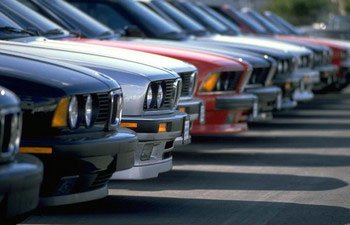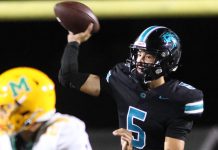Car dealerships pulled $1.8 million into city coffers in 2006,
despite rumors of pending dealership sales and worrisome industry
trends.
Gilroy – Car dealerships pulled $1.8 million into city coffers in 2006, despite rumors of pending dealership sales and worrisome industry trends.
Rising gas prices have put domestic dealerships at a disadvantage compared to fuel-efficient imports, due to perceptions that U.S.-made cars use more gas, local dealers say. At Gilroy Toyota, Frank Bolea said his sales are up 60 percent since last year; at Gilroy Honda, a sign announces cars’ mileage.
After owner Scott Lynch sold Gilroy Ford Lincoln Mercury to Donald Malinoff, owner of Gilroy Pontiac Buick GMC, in February, rumors of other sales have rippled through Gilroy.
Staffing changes at Gilroy Honda, where Mike Luner recently replaced Mickey Ollis as general manager, have many talking of a sale. Luner, who took over last week, said the dealership hasn’t changed hands, and is still owned by Ted Stevens. Stevens could not be reached Monday for confirmation. City records do not show any recent changes to the dealership’s business license, said revenue officer Irma Navarro.
As the new manager, Luner has pulled Gilroy Honda’s ads from San Jose papers, preferring to direct funds to local, grassroots promotions through clubs and organizations such as Little League.
“There’s a Honda dealer in every town,” said Luner. “So we’re going to focus on the local community and be a good, friendly business. Goodwill pays back big dividends.”
Those dividends, in turn, pay Gilroy well: For each car sold in Gilroy, 1 percent of its price returns to the city through sales tax. New car dealerships’ sales tax dipped slightly in 2006, to $1.8 million from $1.9 million in 2004 and 2005, according to Navarro. Between new and used car dealerships, sales tax on sold cars made up 17 percent of Gilroy’s total sales tax in 2006, a sum of $12.45 million.
“They’re definitely a key component of our sales tax,” said Larry Cope, the city’s Director of Economic Development. Before the outlet malls and 10th Street shopping centers sprung up, he added, the dealerships were Gilroy’s main source of sales tax. “Even though we have the regional shopping centers now, the auto dealers do contribute nicely.”
But new pressures are squeezing Bay Area dealerships, said Sheila Martin, owner of Gilroy Chevrolet Cadillac. Consumers can now look up car prices online, and demand minimal mark-up.
“People are very educated about what we pay for a vehicle,” she said, “and they’re reluctant to accept that we need to make some money to cover our costs.”
Deep discounts offered by manufacturers in years past have also slowed sales, said Martin, as shoppers wait for incentives such as zero-percent financing to make a purchase. Meanwhile, Martin notices car dealerships disappearing across the Bay Area, and worries.
The sale of Gilroy’s Ford dealership to another dealer isn’t likely to affect sales tax revenues, said Cope, provided the dealerships don’t consolidate and reduce their respective lines. Since Malinoff bought the business, the Ford dealership has expanded its inventory, said Joe Lopez, general manager of both Gilroy Ford Lincoln Mercury and Gilroy Pontiac Buick GMC.
“We didn’t have any inventory before, and it hurt our sales,” said Lopez. “Since Don [Malinoff] purchased the store, that’s been the only change we’ve made. We’re providing local businesses what they’ve been buying out of town in the past.”
Malinoff was traveling Monday and could not be reached for comment.
Other nationwide trends could impact Gilroy’s car sales – and the sales tax that come with them, said Cope. Chrysler’s recent buyout by Cerberus Capital Management, expected to eliminate thousands of jobs, is one such change.
“If Ford and GM continue their losses,” said Cope, “we’ll see consolidations of factories and auto dealerships, too.”














